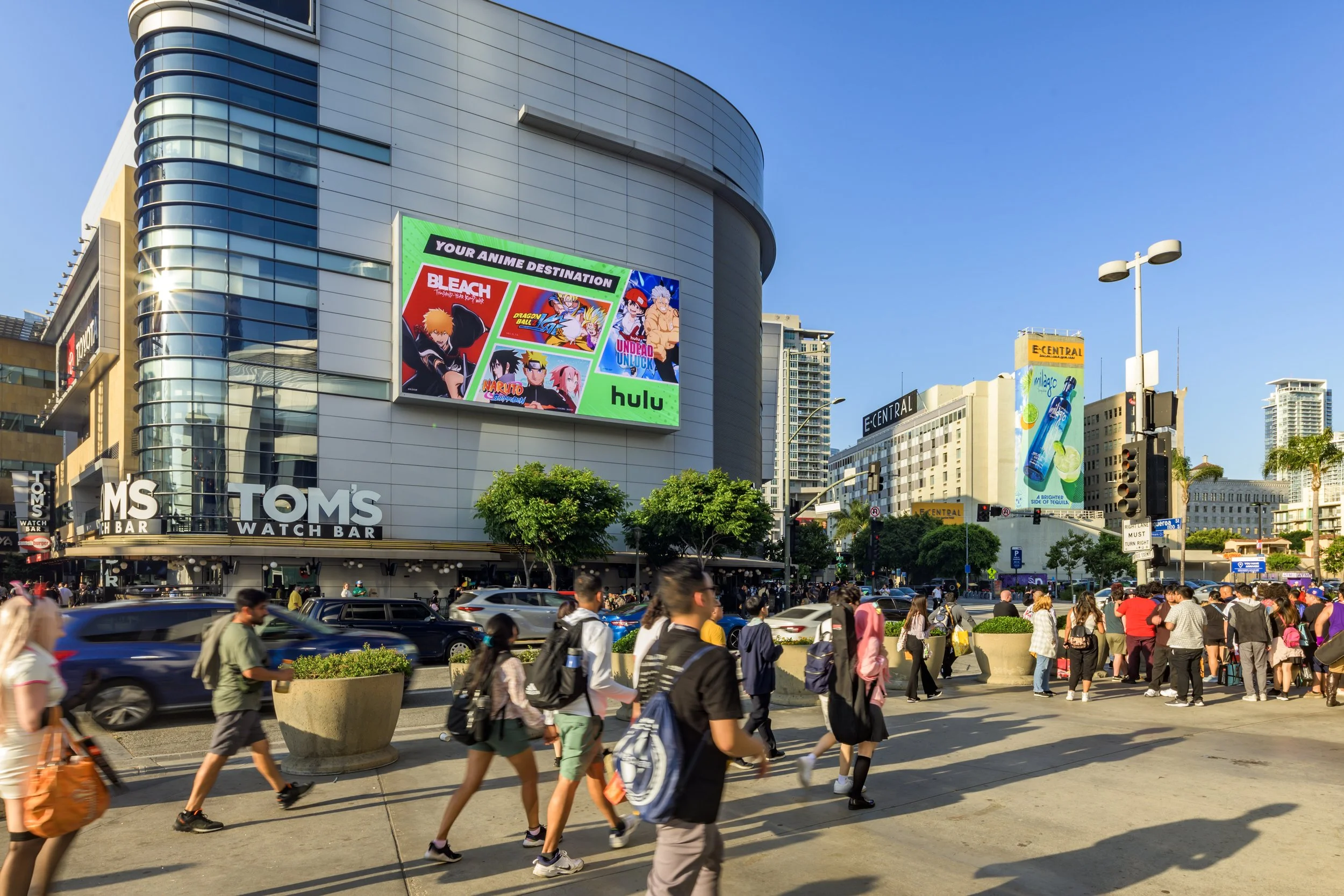After a rough few years, out-of-home advertising is back
The sector has fully recovered in the US and is expected to recover worldwide this year, one report says.
As summer roadtrippers likely know, out-of-home advertising is alive and well—or at least alive. The “well” part is up for debate.
Though OOH advertising is one of the oldest forms of marketing, it’s kept up with the times and has recovered from the massive downturn it experienced at the onset of Covid. Market research firm Magna called OOH “the success story of 2021 and 2022,” noting that in some countries—including the US—the sector reached pre-pandemic levels by the end of last year, and is on track to “complete a full global recovery” this year.
Other recent reports and OOH company earnings indicate brands will continue campaigning alongside highways, at transit hubs, on vehicles, in the sky, and anywhere else in the world they can find real estate, especially given digital advancements.
“Out-of-home really is a pretty durable, relevant portion of the entertainment and media ecosystem globally,” CJ Bangah, a principal in PwC’s customer transformation practice, told Marketing Brew.
Get out (of home)
In 2021, as Americans ventured back outside, marketers showed renewed interest in OOH campaigns.
As recently as this year, major OOH companies reported increases in Q1 revenue:
Outfront Media brought in $376 million in revenue in the US, up 6.3% year over year.
Net revenue at Lamar Advertising, a company that operates in the US and Canada, was $471 million, an increase of 4.4%.
Clear Channel Outdoor Holdings, which operates internationally, reported a 3.8% increase in revenue to $545 million, excluding the impacts of foreign exchange rates.
Those three companies combined hold a 63% share of the US OOH market, which saw $10.1 billion in revenue last year, according to PwC, making it the biggest OOH market in the world.
That being said, OOH is a small channel compared to TV and online advertising. Global spend on OOH is expected to hit almost $40 billion this year, according to Dentsu’s global ad spend forecasts from May, representing about 5% of all global ad spending.
Room to grow
Though OOH doesn’t generate as much ad revenue as some other channels, it has the largest growth rate of any channel, according to GroupM’s midyear forecast, which predicts that global OOH ad revenue will increase by 12.7% this year to nearly $36 billion. Digital OOH (DOOH) is forecast to grow more than 26%.
PwC’s report says that “DOOH is the only growth area of the wider OOH market in the US,” driving growth for the overall market, which it projects will be worth $11.5 billion in 2027. Dentsu, which anticipates about a 3% increase in the global OOH market this year after two years of double-digit increases, also attributes much of this growth to DOOH.
Many OOH companies have recently upgraded their screens and software, according to Dentsu, changes that offered advertisers more digital opportunities in OOH with the likes of 3D projections and interactive experiences, plus better targeting capabilities.
Though the type of targeting that happens with OOH typically isn’t as granular as digital platforms like social, it’s essentially “immune” to issues like click fraud, according to PwC. “You may question the models of how cell-phone identifiers and other audience data is measured, but you can’t set up a server farm to have a bunch of humans drive their cars by your out-of-home billboard. It just doesn’t work the same.” Bangah said.
Still, OOH hasn’t been spared from the industry’s move toward more privacy-oriented ways of targeting audiences. While the sector might not rely on trackers like the third-party cookie, it still uses customer data—like mobile IDs from opted-in devices—in digital campaigns. Recently, companies like Clear Channel have invested in privacy-centric tools like clean rooms.
Looking up
Like any advertising channel, OOH is subject to changing economic conditions. For instance, PwC’s report points out that entertainment and media companies, who are among the biggest OOH spenders, would likely “refocus their budgets” if an economic downturn leads to fewer new movies and shows to promote (though the report does not take the current writers and actors strikes into account). But, the report says that digital OOH opportunities will “outweigh” that potential change.
Kevin Bartanian, founder of OOH media sales company Kevani, said 90% of its inventory is digital, which brands appreciate because it lets them create campaigns that are “contextually relevant” to changing situations, like quickly updating creative to incorporate masks during the early era of Covid.
Bartanian also said he hasn’t noticed a pullback in spending associated with talk of a recession, even though entertainment is one of Kevani’s biggest verticals.
Though OOH is “coming in from a place where we have a very small portion of the overall advertising pie,” Bartanian said the industry has a bright future. Recently, brands ranging from Supergoop to Tinder have upped their investments in OOH advertising.
“Digital tools are now helping us really make that transaction process a lot easier for brands and agencies to conduct, and the measurement is there now, and all sorts of attribution data is available,” he said. “I think all those things represent a lot of growth for us.”
Read the article on Marketing Brew.

